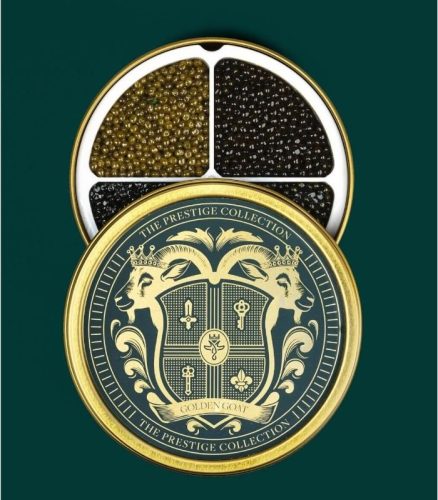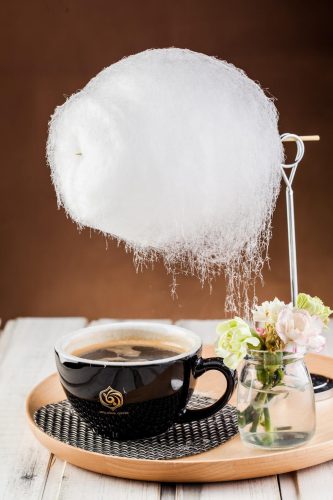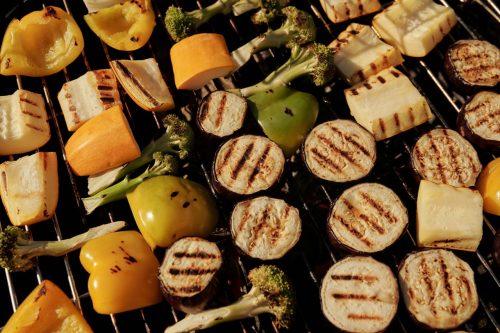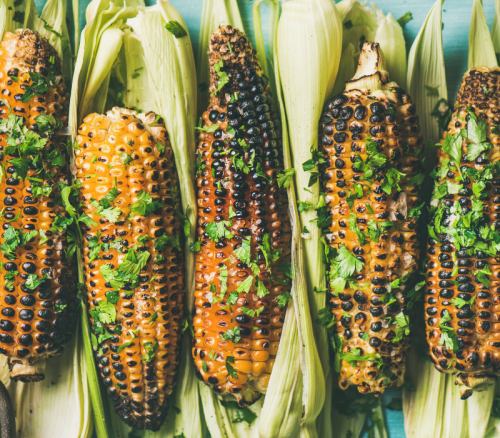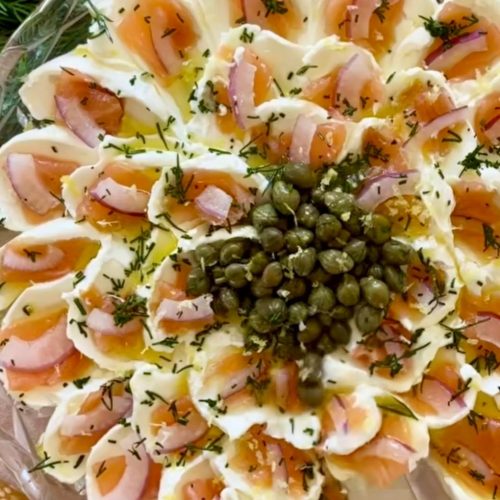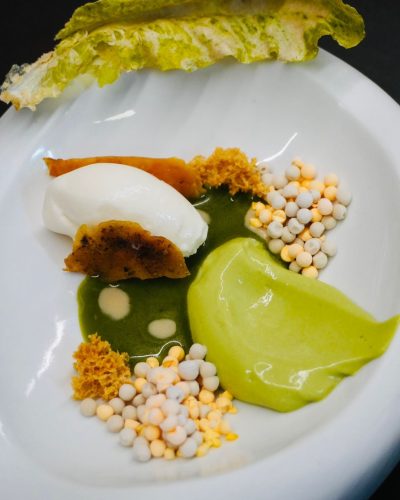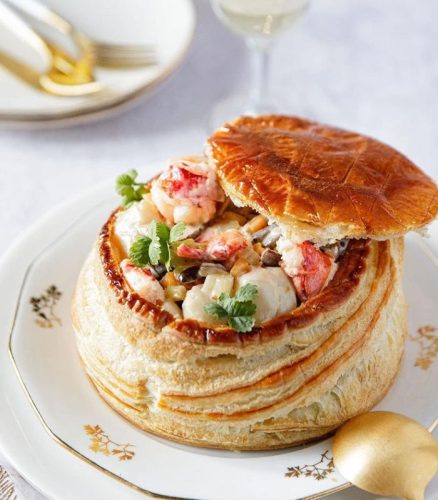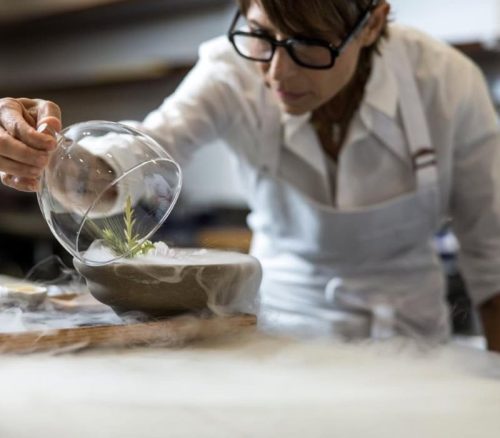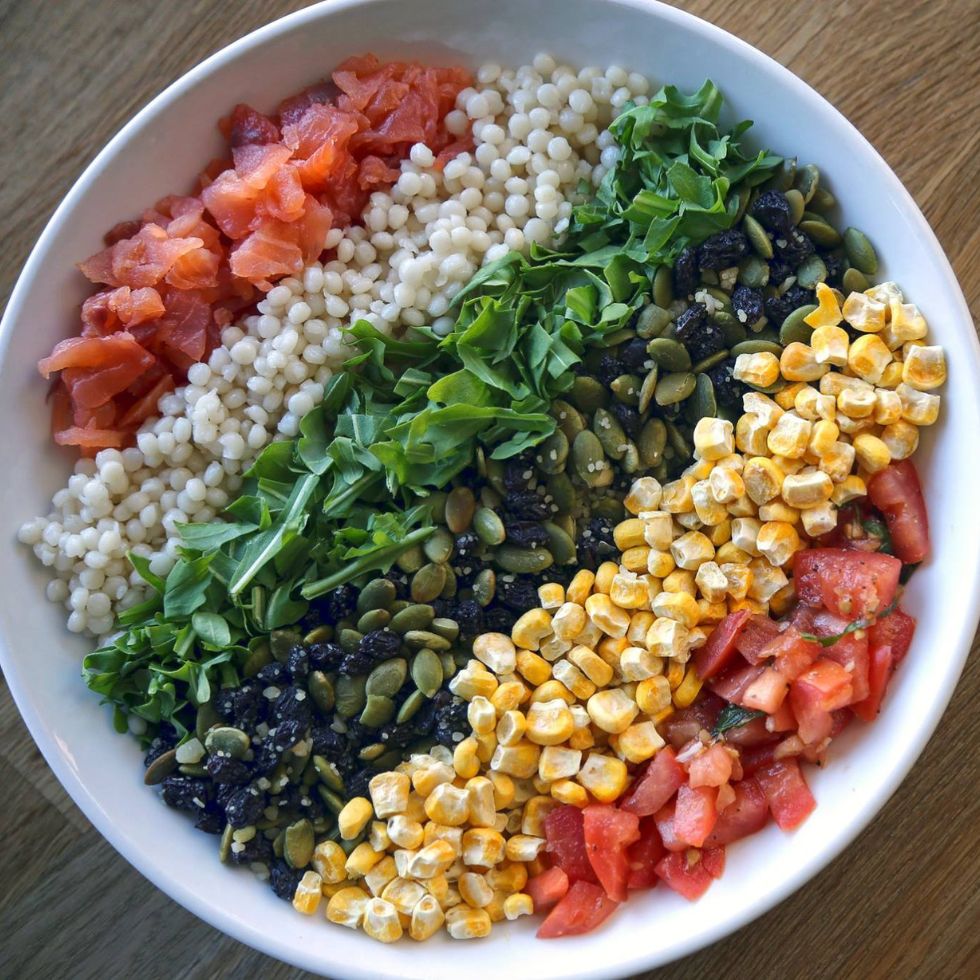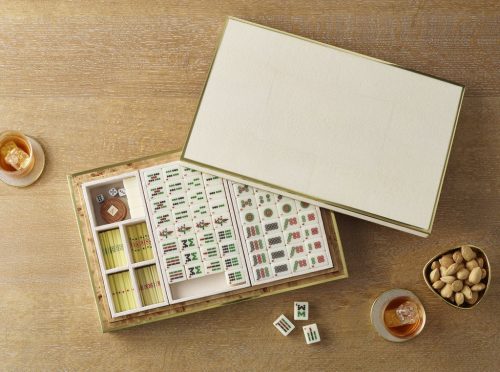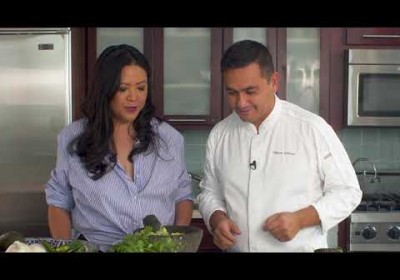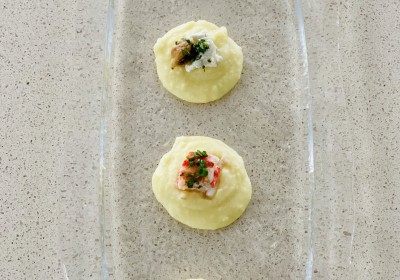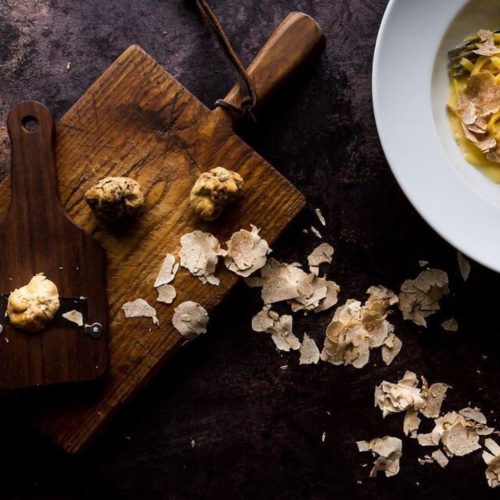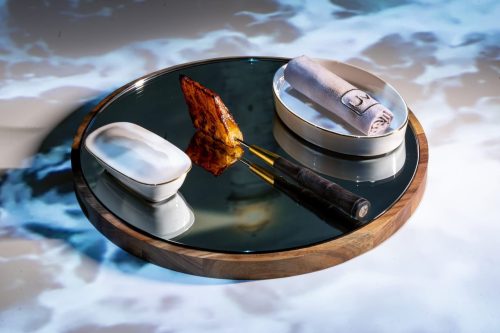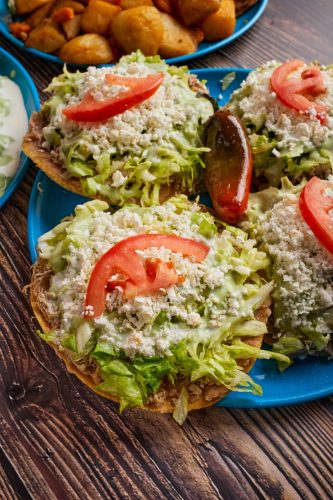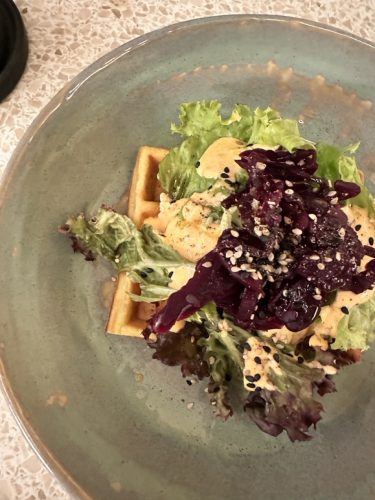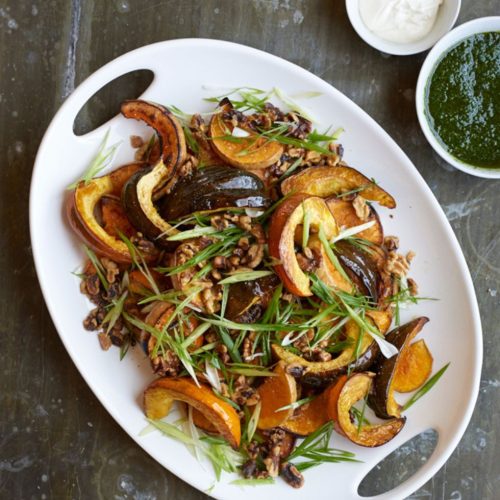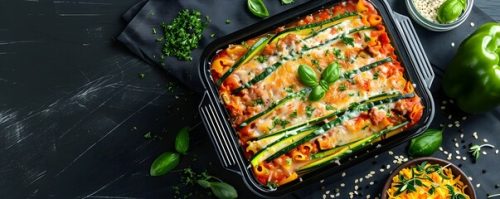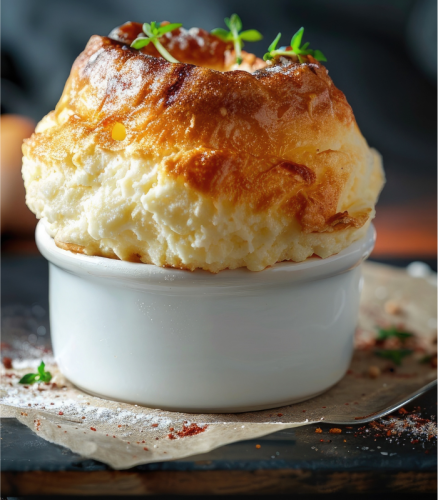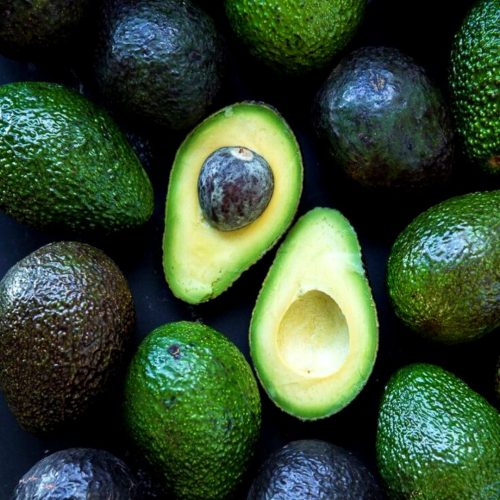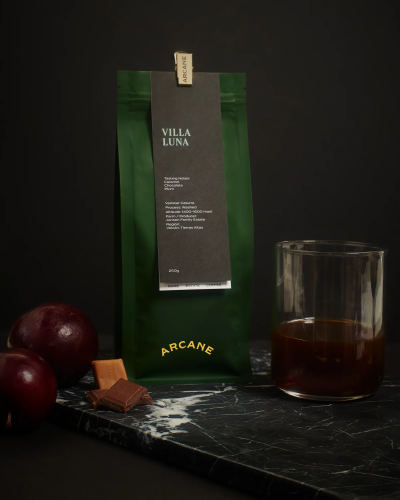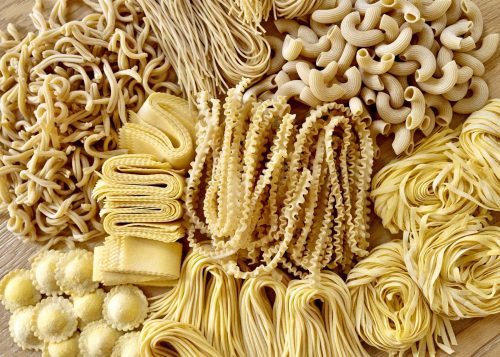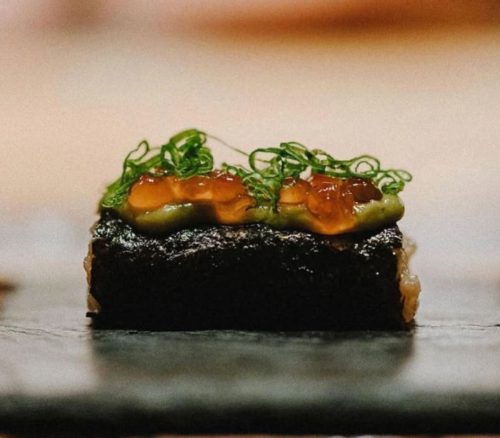There’s no debating it — Roscioli is the best in Rome. For over 50 years, the Italian staple has been taking the peasant-style cuisine the city is known for, and turning it into something truly special. Lucky for us, Roscioli is making its first expansion outside of Italy by opening a location in NYC. To celebrate, here are two of the establishment’s most iconic Roman recipes — cacio e pepe and braised artichokes.
Cacio e Pepe
This iconic Roman recipe is as simple as it gets. It all comes down to high-quality ingredients: black peppercorns, pecorino romano, and fresh pasta. If you do it right, there’s no need to add any cream or butter, and the low lactose content in the cheese makes this a nearly dairy-free dish.
Ingredients

For the Cacio e Pepe
12 oz fresh spaghetti
1 cup reserved pasta water
7 oz freshly grated pecorino romano
2 ½ tsp peppercorns
For the fresh pasta
2 large eggs
1 ½-¼ cup all purpose flour
¼ tsp salt
2-6 tbsp water
KitchenAid mixer and pasta attachment
Directions
Making the pasta dough
First, add the eggs, salt, 1 ½ cups of flour and 2 tbsp of flour to the bowl of your stand mixer. Using the flat beater, attach it to the mixer and set to speed 2. Mix for 30 seconds, then remove the flat beater and replace it with the dough hook. Turn the speed back to setting 2, and let it knead for an additional couple of minutes. If the dough looks too dry at this point, add a tbsp of water at a time. If it looks too wet, add a little more flour until you’re happy with the consistency.
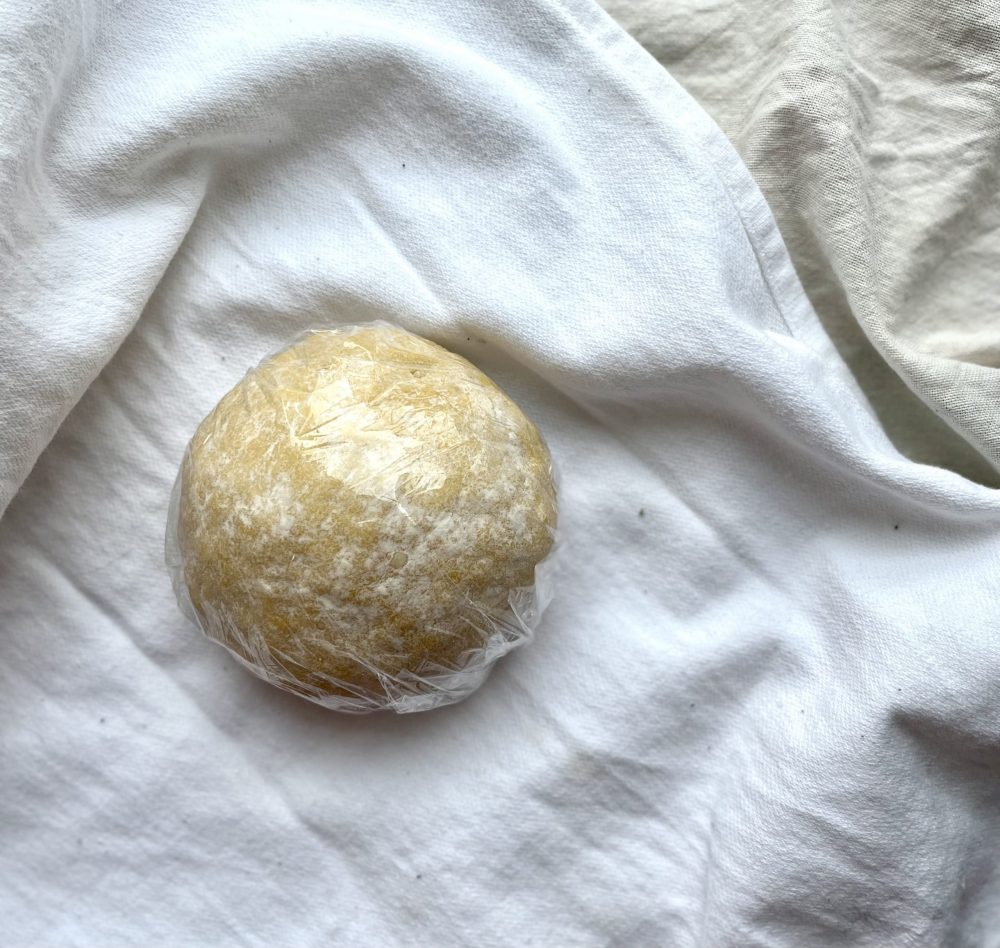
Next, remove the dough from the bowl and place on a clean, floured surface. Knead with your hands for 1–2 minutes, forming the dough into a ball. Place plastic wrap over the top of the dough and let rest for at least 25 minutes.
Shaping the pasta
After your dough has rested, divide the ball into four even pieces. Cover the pieces you aren’t using with a damp towel as you work. Attach the pasta sheet roller to your stand mixer, and put it on setting 1.
Next, take one of your four pieces of dough and flatten it until it’s about half an inch thick. Setting your stand mixer at a speed of 2/4, carefully feed the dough through the attachment. Once it’s fed through, fold the dough in half, then in half again. Make sure it’s flat enough to fit through the attachment, then run it back through two times.
Move the pasta sheet roller to setting 2, and continue to run your dough through. Repeat this process, moving the speed all the way up to setting 5, until you have a very thin sheet of pasta. You may need to cut the sheet in half or thirds by the time you get to the 4th or 5th speed setting, or the pasta will get very long.
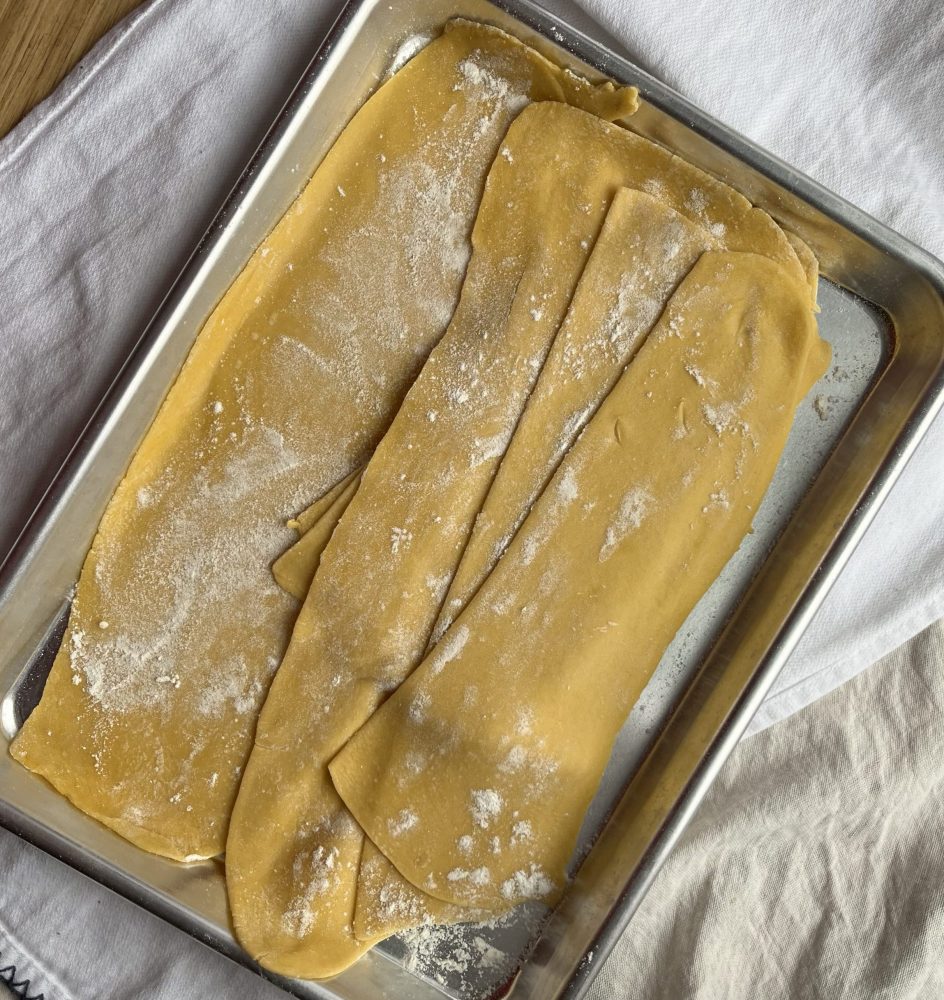
Once you have your sheet as thin as possible, lay it flat on a baking tray dusted with flour. Repeat this process with the remaining 3 pieces of dough, flouring your sheets as you lay them on the baking tray.
Next, remove the pasta sheet roller from the stand mixer, and replace it with the spaghetti attachment. Place the mixer on speed 2, and carefully feed your sheets of pasta through the attachment, one at a time.
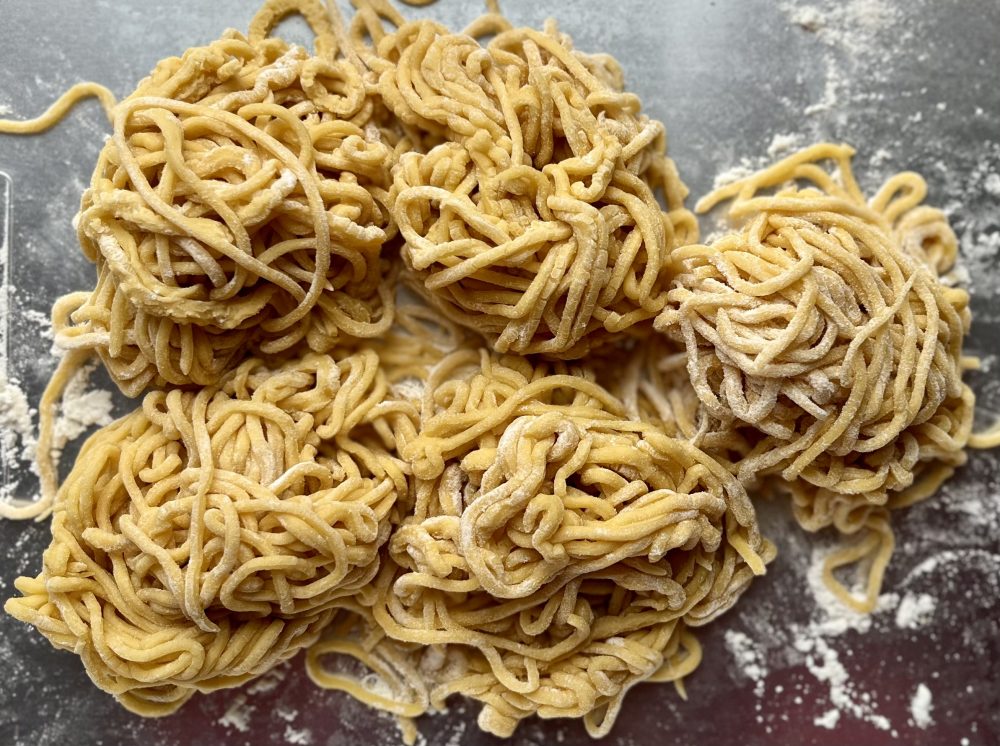
Once the spaghetti is cut, toss it with a bit of flour and lay it in a loose ball on a baking sheet. Repeat this process with the remaining sheets of pasta, gathering them in loose bunches. Let the spaghetti dry for at least 10 minutes before cooking.
Cooking the spaghetti
You already know that pasta water is liquid gold when it comes to cooking, but this is a pro tip for making it an even better ingredient. Cooking your pasta in a minimal amount of water allows the water to soak up the pasta starches. It leaves you with an extra thick, starchy liquid that’s perfect for making sauces like cacio e pepe. So, using a shallow pot with high sides, add about 3 inches of water and a generous pinch of salt. Heat over high until boiling, then add your spaghetti. Cook for 3 minutes, until just al dente. Reserve 1–2 cups of your pasta water, setting aside your cooked and drained pasta.
For the Cacio e Pepe
Begin by toasting your whole peppercorns in the same shallow pot you used to cook the spaghetti. Toast for about 5 minutes over medium-high heat, until the pepper is fragrant. In the meantime, grate your pecorino romano into a small bowl, setting aside a few tablespoons for garnishing. Add ½ cup of pasta water to the bowl and mix vigorously with a fork or whisk until you have a smooth, creamy texture with no lumps of cheese. Add a little more water at a time if necessary.
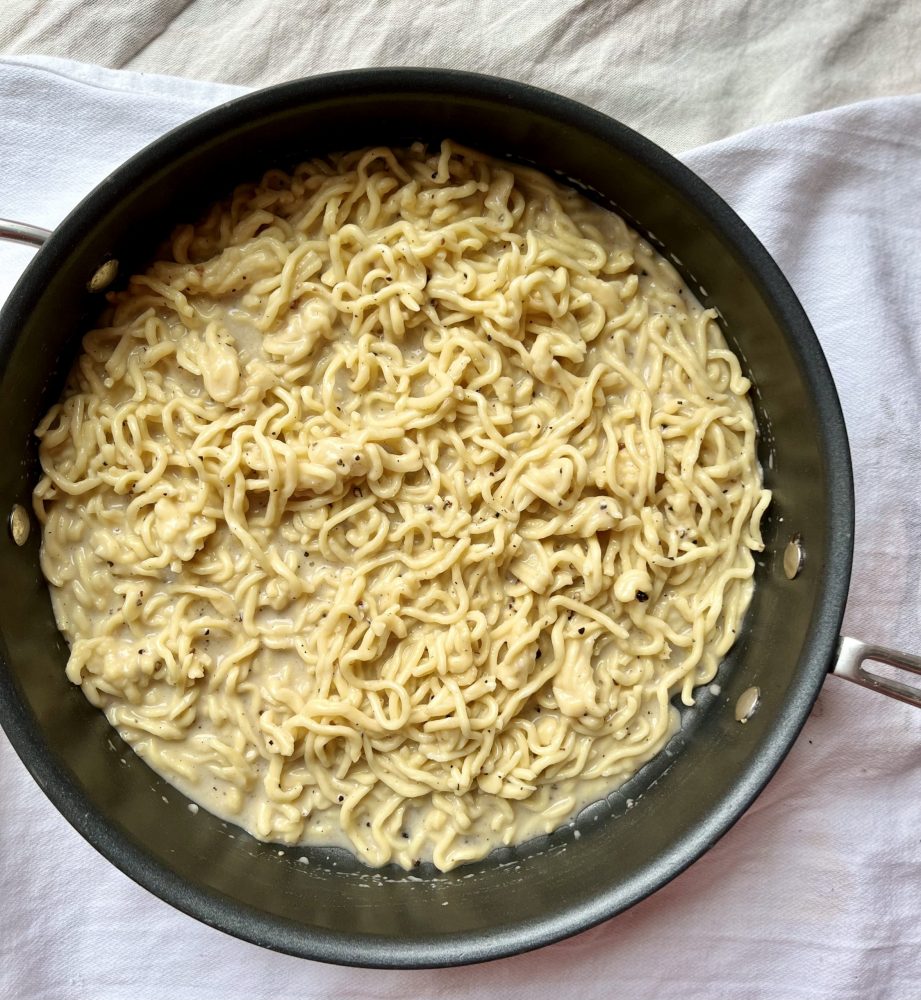
Once the peppercorns are toasted, crush them into a coarse grind using a mortar and pestle. Toss them back into the pan over medium heat and add a splash of hot pasta water. Stir with a wooden spoon for a few seconds, then turn off the heat and toss in your cooked spaghetti and pecorino cream. Toss, combining the pasta with the cream, until your sauce is glossy and cohesive. Add a few splashes of pasta water at a time to bring the sauce together if necessary.
Immediately plate the pasta in a warm bowl. Garnish with more pecorino and black pepper, and enjoy.

Roman Artichokes
If there’s one common theme among Roman recipes, it’s that less is more. Take Roman artichokes. Like cacio e pepe, this is a dish that uses minimal ingredients, allowing the flavors to truly shine. It’s bright, rich, and an ode to everything great about Roman food.

Globe artichokes, the larger variety, are perfect for stuffing with herbs.
Ingredients
1 bunch of mint
1 bunch of parsley
3 cloves of garlic
1 lemon
1 cup of water
4 purple globe artichokes
1/2 cup of good-quality extra virgin olive oil
1 tbsp salt, plus more to taste
1 tbsp freshly cracked black pepper, plus more to taste
Directions
To Prepare the Artichokes

Begin by squeezing the juice of half a lemon into a bowl of water. To trim your artichokes, first cut off the stem and the tip. Using your hands, spread the leaves of the artichoke to reveal the inner layers. Peel off any of the hard, thicker leaves from the outer layer. With a sharp paring knife, peel and round off the stem, then remove the hair-like “choke” of the artichoke. This is at the center; it can be removed with a corer, small knife, or spoon. Once your artichokes are all prepped, place them in the bowl of lemon water to soak. Lay a paper towel over the top to keep the artichokes submerged.
For the Filling
While the artichokes soak, you can prepare your filling. Coarsely mince the garlic, mint, and parsley. Next, add it to a small bowl with 2 tbsp of olive oil and a pinch of salt and pepper. Set aside.
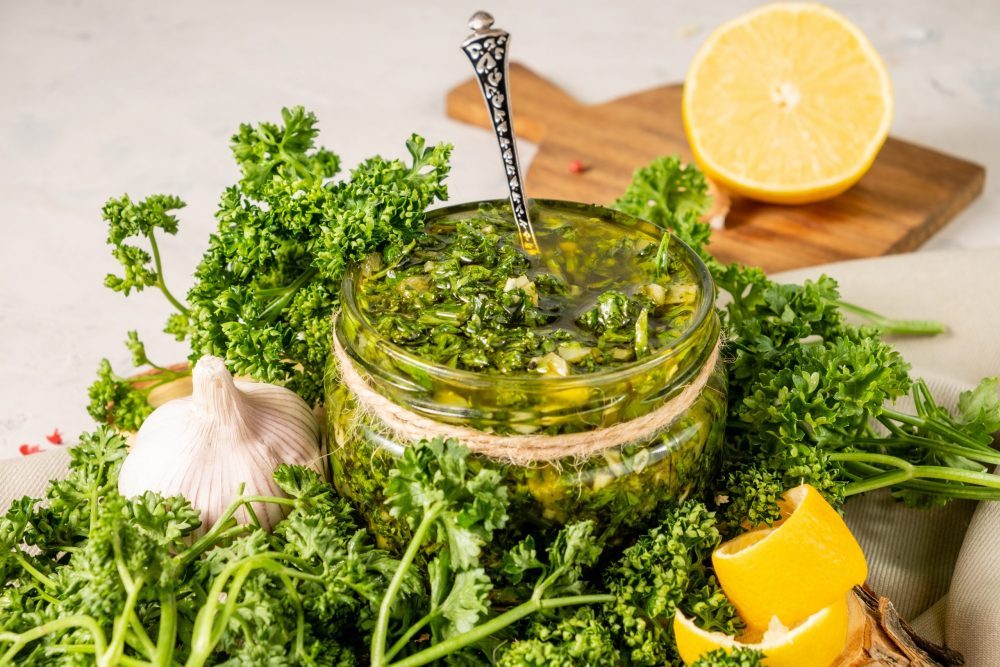
Once your mixture has been sitting for about 10 minutes, you can drain your artichokes. Pat dry to remove excess moisture, then begin to stuff the center of the artichokes with your herb filling. Make sure to spread apart the leaves as you spoon the mixture in to maximize flavor in every bite.
When all the artichokes are stuffed, place them stem-side-up in a medium pan with high edges. Pour in the remaining olive oil and half a cup of water, and cover with a lid. Place on the stove over medium-low heat for about 20–25 minutes, or until you can easily pierce the stems with a knife. Serve the braised artichokes with warm bread, and make sure to reserve any extra artichoke oil for dipping.
Related Articles
The Review: Felice Columbus
Bisteca Fiorentina and Raw Fennel and Artichoke Salad
Roscioli Comes to NYC

